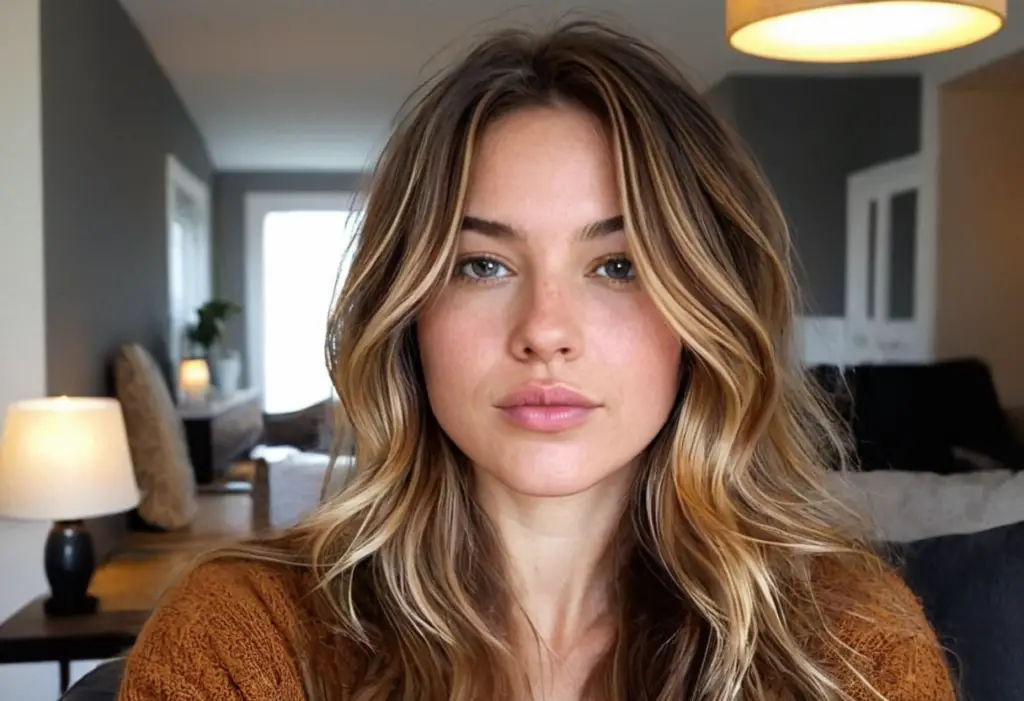Choosing between balayage and highlights can be as challenging as picking the perfect outfit for a special occasion. Both techniques have unique benefits and styles. The selection depends on your hair type, the look you want, and how much upkeep you’re willing to do. This guide will help you understand the differences between two popular coloring methods. It will help you choose one that fits your style and lifestyle.
What Is Balayage?
Definition and Technique
Balayage is a French word meaning “sweep,” and this term perfectly describes the technique. Unlike traditional highlights, balayage involves freehand painting of the color onto the hair. The colorist uses a brush to apply the dye in sweeping motions, creating a natural, sun-kissed look without the use of foils.
Benefits of Balayage
- Low Maintenance: Balayage is known for its low-maintenance qualities. The gradual transition of color means fewer touch-ups and less visible regrowth.
- Natural Look: It looks more natural. It’s ideal for those who want a subtle change that blends with their color.
- Versatility: Balayage suits many hair types and colors. It can be customized for effects from soft highlights to bold contrasts.
Who Might Prefer Balayage?
Balayage is perfect for individuals who want a more natural, understated color change. It’s especially great for those who prefer a low-maintenance option and enjoy a more sun-kissed, blended look.
What Are Highlights?
Definition and Technique
Highlights involve applying color to specific sections of hair, typically using foils. This technique creates a more defined and contrasting color effect compared to balayage. The color is applied to small sections, and the foils help to keep the color separated from the rest of the hair.
Advantages of Highlights
- Bold Color Contrast: Highlights create a strong contrast between the colored and natural hair. They’re ideal for those wanting a more pronounced change.
- Customizable: You can apply highlights in different patterns and intensities. This allows for looks from subtle to dramatic.
- Quick Application: Highlights are usually faster to apply than balayage. So, they are a better option for those on a tight schedule.
Who Might Prefer Highlights?
If you love bold, noticeable color changes and enjoy a more structured look, highlights might be the perfect choice. They’re great for those who are looking for a dramatic change and don’t mind regular salon visits.

Balayage vs. Highlights: Key Differences
Application Techniques
- Balayage: Hand-painted, freehand technique without foils.
- Highlights: Color applied using foils to create defined sections.
Visual Effects
- Balayage: Creates a more natural appearance with smoothly blended color transitions.
- Highlights: Creates distinct, defined color contrasts that stand out more.
Maintenance Requirements
- Balayage: Lower maintenance due to gradual color transition and less visible regrowth.
- Highlights: Requires more frequent touch-ups as the regrowth is more noticeable.
Cost and Salon Visit Frequency
- Balayage: Often more cost-effective in the long run due to fewer salon visits.
- Highlights: Generally higher maintenance and more frequent salon visits, which can add up in cost over time.
Which Technique Suits Your Hair Type and Style?
Hair Types: Straight, Curly, Fine, Thick
- Straight Hair: Both balayage and highlights can work well, but balayage can provide a softer, more blended look.
- Curly Hair: Balayage often works better for curly hair, enhancing the natural movement and texture.
- Fine Hair: Highlights can add dimension and the appearance of volume, while balayage can create a natural, less dramatic effect.
- Thick Hair: Both techniques are suitable, but highlights might be preferred for adding contrast and depth.
Lifestyle Preferences: Low-Maintenance vs. High-Maintenance
- Low-Maintenance: Balayage is ideal if you prefer fewer salon visits and less upkeep.
- High-Maintenance: If you don’t mind touch-ups, highlights might suit you better. They have a more pronounced color effect.
Face Shapes and Skin Tones
- Face Shapes: Balayage can suit any face shape. It adds subtle highlights around the face. Highlights can be placed to frame the face.
- Skin Tones: Both techniques can be customized to complement different skin tones. Balayage offers a more natural blend, while highlights can be adjusted to create a striking contrast.

Pros and Cons of Balayage
Key Benefits
- Natural Appearance: Balayage provides a sun-kissed, natural look.
- Low Maintenance: Fewer touch-ups are required.
- Customizable: Can be tailored to achieve different effects.
Potential Drawbacks
- Application Time: It can take longer to apply compared to highlights.
- Initial Cost: The first application may be more expensive. But, it balances out over time with less frequent touch-ups.
Pros and Cons of Highlights
Main Advantages
- Bold and Defined: Highlights create a strong contrast and stand out more.
- Quick Application: Faster process compared to balayage.
- Customizable: This can be adjusted for various styles and intensities.
Downsides
- Higher Maintenance: Requires more frequent salon visits.
- More Noticeable Regrowth: Regrowth can be more apparent, requiring regular touch-ups.
Conclusion
When choosing between balayage and highlights, consider your hair type, desired look, and how much upkeep you want. Balayage gives a sun-kissed, low-maintenance look. Highlights are bold and defined but require more upkeep. Reflect on your style and consult with a stylist to make the best choice for your hair goals. Both techniques have unique benefits. Select the option that best suits your style and way of life.
